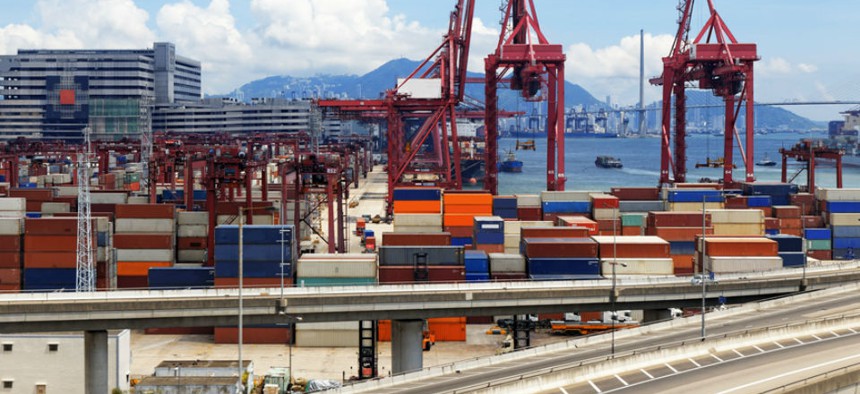
Federal agencies annually spend more than $34 billion on transportation and logistics. cozyta/Shutterstock.com
The 10 Categories Where Federal Agencies Spend the Most on Contracting
White House moves forward with a plan to make federal acquisition more efficient.
For the last several months, the Obama administration has trumpeted its initiative to simplify the federal acquisition process.
The main component of that overhaul is “category management” -- sorting agencies’ purchases into the most common groups of products and services. The General Services Administration is currently developing a website to help procurement officers, called the “common acquisition platform.”
The platform will serve as the single access point for agencies looking to purchase goods or services from those categories, each of which will have its own “hallway” of product options, as well as digital services offering advice and information, such as industry trends and existing contract vehicles.
GSA and the other six largest and highest-spending agencies, known as the Strategic Sourcing Leadership Council, met last month to move the development of the acquisition overhaul forward. In a blog post Wednesday, Anne Rung, the White House’s Federal Procurement Policy Office administrator and Tom Sharpe, the Federal Acquisition Service commissioner, spelled out what the categories might look like.
Once the online portal is fully operational, Rung and Sharpe said category management will provide “a new and transparent view of the fragmented federal acquisition landscape that will help drive the government to buy and act as one.” Ultimately, they expect the changes to lead to more informed decision making and, in turn, dramatic savings for agencies and taxpayers. The categories below, listed by amount spent across government, cost agencies $277 billion in fiscal 2013.
- Facilities and Construction: $72.1B. Includes construction and building materials and services, as well as real estate purchasing and leases.
- Professional Services: $64.4B. The broadest of the proposed categories, this includes legal, financial and marketing services, public relations and technical expertise.
- Information Technology: $47.4B. Includes software, hardware, consulting, security and outsourcing, as well as telecommunications.
- Transportation and Logistics Services: $34.1B. Includes package delivery, logistics support, motor vehicles and fuel, among other things.
- Medical: $33.2B. Includes pharmaceuticals, health care services and medical equipment.
- Industrial Products and Services: $11.8B. A catch-all category for tools, machinery and maintenance.
- Security and Protection: $4.8B. Includes systems, services and animals.
- Human Capital: $3.6B. Includes educational services, vocational training and human resources investments.
- Travel and Lodging: $3.6B. Contracts for passenger travel and accommodations would fall into this category.
- Office Management: $2.1B. This category would include products such as furniture and office supplies.
(Image via cozyta/Shutterstock.com)







